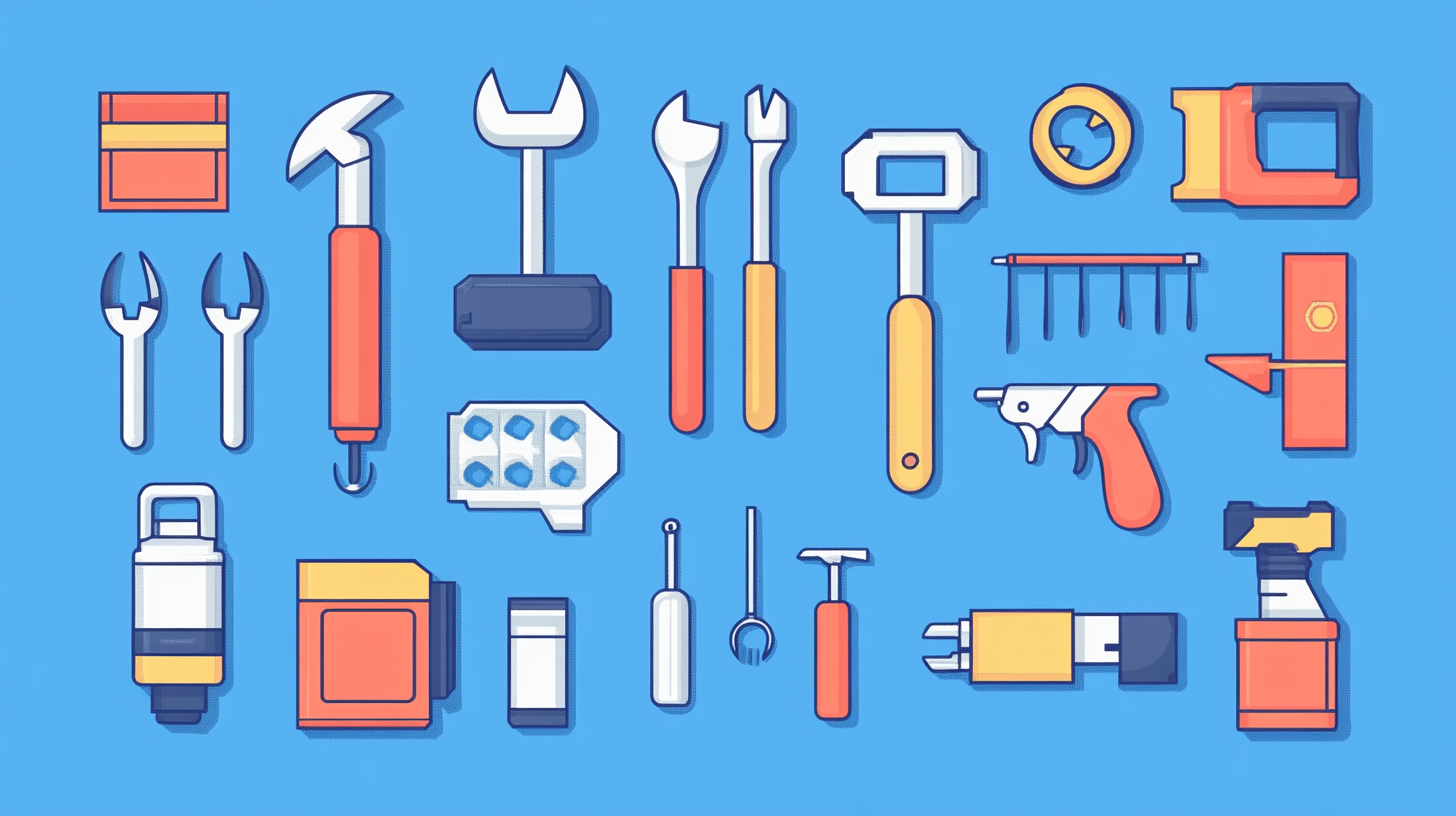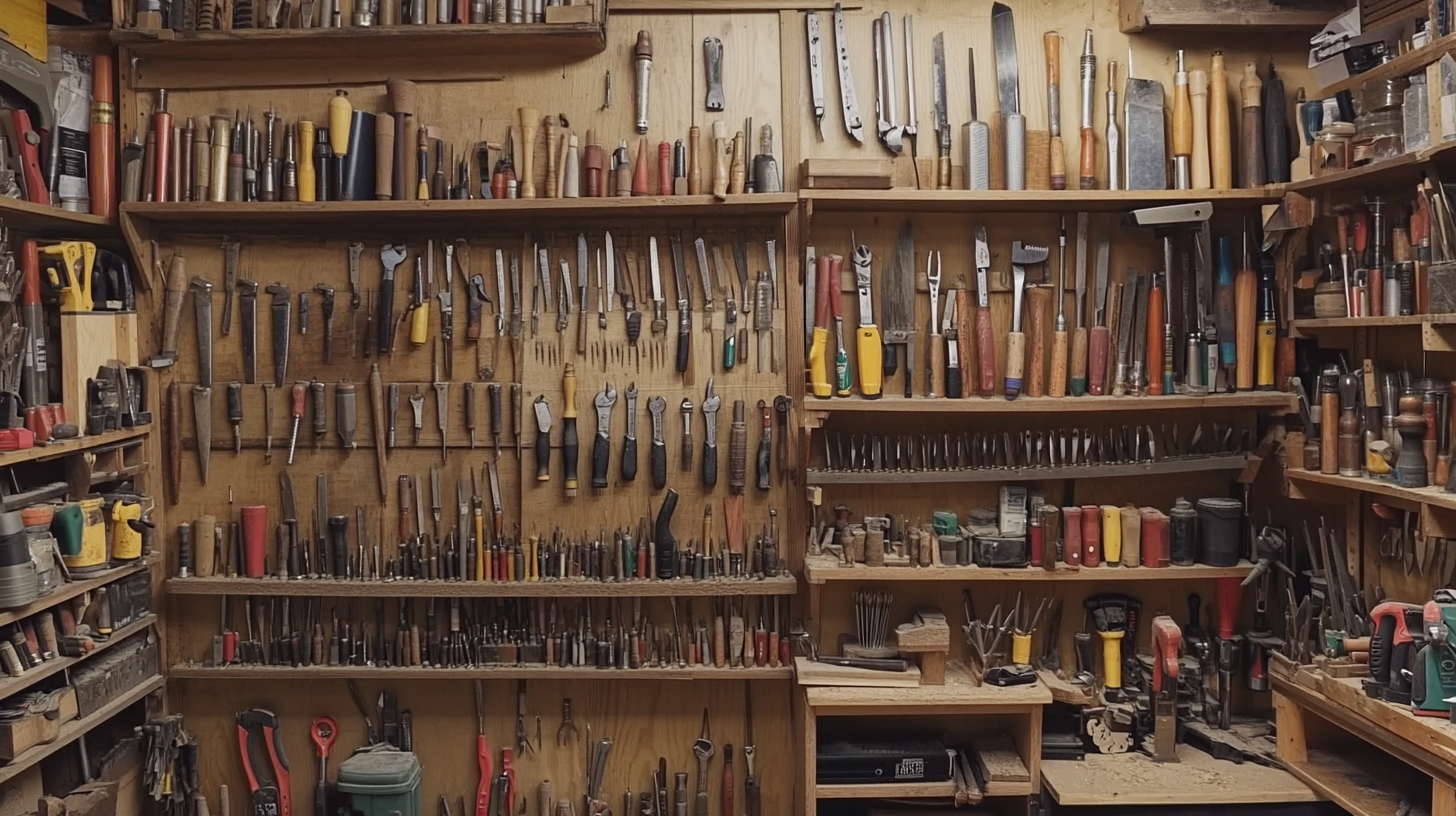Blog
Mastering Hand Tools: A Comprehensive Guide to Elevate Your DIY Skills
In the realm of DIY projects, mastering hand tools is an essential skill that can elevate your craftsmanship and transform your approach to building and repairing. Unlike the convenience of power tools, hand tools offer a unique blend of precision, control, and connection to the craft that many enthusiasts seek. Whether you are a novice looking to establish a foundational understanding or a seasoned DIYer aiming to refine your techniques, our comprehensive guide will delve into the world of hand tools, exploring their history, types, and effective usage. We’ll provide insights into selecting the right tools for your projects, tips for maintenance, and techniques to enhance your efficiency and effectiveness. By the end of this guide, you will not only gain confidence in handling various hand tools but also develop a deeper appreciation for the artistry and satisfaction that comes with traditional craftsmanship.

Understanding the Importance of Hand Tools in DIY Projects: Key Industry Insights
In the ever-evolving landscape of DIY projects, hand tools remain an invaluable asset for enthusiasts and professionals alike. Unlike their powered counterparts, hand tools offer precision and control, crucial for intricate tasks that demand a steady hand and keen attention to detail. Whether you're chiseling wood, measuring accurately, or making delicate cuts, mastering hand tools can significantly enhance your capabilities and ensure high-quality results.
Understanding the importance of hand tools in DIY projects can lead to an increase in both efficiency and creativity. While the market for power tools is booming, with projections indicating substantial growth driven by industrial automation, hand tools still hold a unique position in the toolkit of craftsmen. They encourage a hands-on approach, fostering a deeper connection with the materials and the work itself. As trends in DIY continue to evolve, integrating traditional hand tools with modern techniques can help elevate your skills and inspire innovative project ideas. Embracing this balance can result in exceptional craftsmanship and a fulfilling DIY experience.
Mastering Hand Tools: A Comprehensive Guide to Elevate Your DIY Skills
| Tool Name | Primary Use | Key Benefits | Safety Tips |
|---|---|---|---|
| Hammer | Driving nails | Versatile, easy to use | Wear safety glasses; check for loose nails |
| Screwdriver | Tightening/loosening screws | Essential for assembly tasks | Select the right type; keep hands clear |
| Tape Measure | Measuring distances | Accurate and portable | Avoid retracting near faces; check for wear |
| Pliers | Gripping and twisting | Strong grip, multi-functional | Use for intended tasks only; don’t use as a hammer |
| Saw | Cutting wood/material | Precise cuts, available in various types | Ensure blade is sharp; keep fingers clear |
Essential Hand Tools Every DIY Enthusiast Should Have: Data-Driven Recommendations
When it comes to mastering hand tools, having the right essentials is crucial for any DIY enthusiast. Essential hand tools not only enhance your craftsmanship but also elevate the quality of your projects. In today’s booming market for household and DIY hand tools, valued at around $21 billion in 2024 and expected to grow to $26.4 billion by 2030, understanding which tools will be a valuable addition to your workshop is more important than ever.
For beginners and seasoned DIYers alike, a well-rounded toolkit typically includes a reliable hammer, a versatile screwdriver set, and a sturdy pair of pliers, which are all fundamental for tackling various tasks. However, as trends in the DIY industry evolve, so does the technology behind these tools. Investing in high-tech tools can significantly enhance your workshop experience, allowing you to complete projects more efficiently and with greater precision.
Furthermore, when selecting tools, consider data-driven recommendations that emphasize user feedback and performance evaluations. Whether you are upgrading your workshop or searching for the perfect gift for a car lover, these informed choices ensure that you are equipped with the best hand tools to elevate your DIY skills and enjoy every minute spent in your workshop.

Techniques for Mastering Hand Tools: Enhancing Precision and Skill
Mastering hand tools requires not just the knowledge of the tools themselves but also the techniques that elevate precision and skill in any DIY project. The first step in honing these techniques is understanding grip and control. A proper grip provides the necessary leverage and stability, allowing for more accurate cuts and finishes. Practicing with various hand tools, such as chisels and hand saws, while paying attention to your hand positioning can greatly improve your confidence and efficiency.
Another essential technique is mastering the art of measuring and marking. Accurate measurements are the backbone of any successful project. Utilizing tools like measuring tapes, squares, and marking gauges ensures that you can visualize your work clearly and keep your lines straight. It's important to double-check your measurements and consider the grain of the wood or the material you're working with, as this can affect how it will behave when cut. By dedicating time to these fundamental techniques, you can enhance both your skills and the quality of your finished projects, making the process of DIY much more rewarding.
Safety First: Industry Standards for Using Hand Tools Effectively
When it comes to using hand tools effectively, prioritizing safety is paramount. According to the U.S. Bureau of Labor Statistics, nearly 50,000 hand tool-related injuries occur each year in the workplace, highlighting the urgent need to adhere to industry standards. Adopting appropriate safety measures can drastically reduce the risk of injuries, making it essential for DIY enthusiasts and professionals alike to cultivate safe practices in their projects.
One of the fundamental industry standards is the use of personal protective equipment (PPE). A report from the American National Standards Institute (ANSI) emphasizes that utilizing safety glasses, gloves, and ear protection can reduce the likelihood of injuries by up to 30%. Additionally, ensuring proper tool maintenance, such as sharpening blades and checking for defects, further enhances safety and tool performance. The National Safety Council recommends implementing pre-use checklists for tools, fostering a habit of regular inspections to catch potential hazards early on.
Incorporating proper ergonomics is another critical aspect of hand tool safety. The Occupational Safety and Health Administration (OSHA) reports that incorrect posture can lead to musculoskeletal disorders—often resulting in long-term injuries. By following guidelines on tool usage and maintaining correct body mechanics, individuals can not only extend the life of their tools but also protect their physical well-being while engaging in DIY projects.

The Impact of Quality in Hand Tools on Project Outcomes: An Analysis of User Ratings and Durability
When it comes to DIY projects, the significance of choosing high-quality hand tools cannot be overstated. User ratings often reflect the performance and durability of these tools, which in turn directly impacts the outcome of various projects. A comprehensive analysis shows that tools crafted from premium materials not only last longer but also enhance precision and ease of use. For instance, a well-balanced chisel can make intricate carvings effortless, while a high-quality saw can deliver clean cuts without splintering.
Durability is another pivotal factor influencing user satisfaction. Tools that withstand the test of time and rigorous use encourage users to engage more confidently in their DIY endeavors. A tool’s ability to maintain its sharpness and structural integrity, despite multiple uses, is often highlighted in customer reviews. This reliability fosters a positive feedback loop: as users invest in better tools, they achieve more successful outcomes, which in turn motivates them to undertake even more complex projects. Therefore, prioritizing quality in hand tools isn’t just an investment in equipment; it is a commitment to enhancing overall craftsmanship and project excellence.
